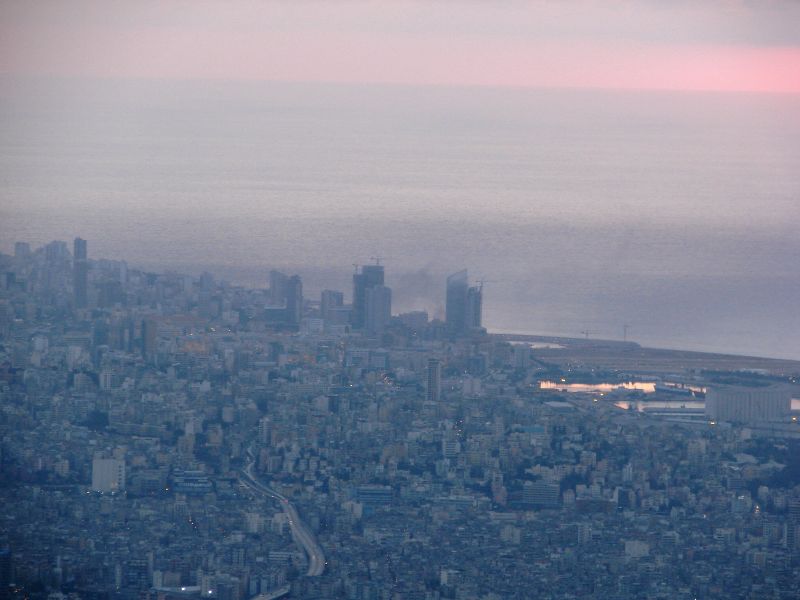On August 4, 2020, the port of Beirut suddenly exploded. After Australian bushfire season, the Covid-19 pandemic, the explosion of the Ukraine International Airlines Flight 752, the death of George Floyd, and widespread protests in the United States and Europe, no one at all thought that on one hot summer day, 2750 tons of ammonium nitrate, stored in customs warehouses without sufficient safety measures, would explode.
Beirut, the beautiful and old city of Lebanon, collapsed in a matter of seconds. It was as if the city had been bombed. 300,000 people became homeless, 7,000 were injured, and more than 200 died. In addition, 110 people went missing, and no trace of them remains. The people of the city looked on in astonishment and did not know what had happened to them. They wondered if there was a war or there has been an earthquake. Maybe the world is coming to an end!
The damage to the city was estimated at between $10 and $15 billion. The economic turmoil, political corruption, the sharp rise in prices, and the devaluation of the national currency more than a year earlier had left Lebanon with the strongest protest movements in recent years. Now, the people were exhausted and shouting their demands.
A few days after the explosion, people took to the streets and there was a widespread protest in the city. Thousands stormed government buildings. They blamed the authorities for the tragedy and accused them of incompetence and inefficiency. The protesters demanded the resignation of the government and the disarmament of Hezbollah militants. A number of protesters entered the foreign ministry building, calling it the “Revolutionary Command Center.” Prime Minister Hassan Diab and the Minister of Information Manal Abdel Samad resigned.
You could see the stones, iron, and glass from dilapidated buildings and broken cars here and there, all over the city. Fear, anger, and despair brought people closer together to stand up and rebuild Beirut, one of the most beautiful cities in the Middle East.
Lady of Liberty, Lady of the World, or Bride of the Revolution are the various names people have given to the statue made by Hayat Nazer, a 33-year-old Lebanese artist. She left the choice of name to the people because she believes that her works are the narrators of Lebanese stories. In an interview with Euronews, she said that she wanted to preserve what they have left behind, from the heart of art, for the current and future Lebanese generation.
The statue, a woman standing with her hair blowing in the wind and holding her hand to the sky, stands on the shores of the ruined port of Beirut. Many photos of this statue have been published. In some photos, she holds a torch, and in some, she seems to be holding a sword. I asked Nazer about this difference and the change that can be seen on Internet.
“At first, it was the fist of the revolution holding a broken mirror, but it got broken. The second time, I had put the torch because of the 17th of October event, and her torch represented all the torches carried by the protesters coming from all areas of Lebanon. Then when I removed the torch from her hand to light the bigger one at the port, her hand was empty, so I made her carry the Lebanese flag. The next day, the wind blew away the flag, so she was only carrying the stick, which looked like a sword,” she told me.
With a body covered with glass, it shines under the sun and attracts attention. Down, at her feet, is a clock with the hands permanently stopped at 6:08. That is, when an explosion occurred, a catastrophe that had a psychological impact on the people. But musicians and artists try to take it on as a different form.
In this situation, art became a source of relief for the people. With their works, artists are able to reflect the inner state of the people and their passion for life, not war. Nazer believes that art is a way to make a change. She says their cry is preserved in the form of a statue, and it can still shout the truth. Like her previous works, Phoenix and Heart of the Revolution, it had the same concept.
Now this statue has a vague fate. Nazer wrote in one of her Instagram posts that the statue was to be removed from where it is currently situated. She is worried that government protestors might burn or destroy the statue, which took 15 hours a day for two months to create and has become a symbol of resistance. Fortunately, even if that happens, she reassures us that she will be making a bigger statue. So big that nobody can shake it.
Image credit: Luciana Luciana

